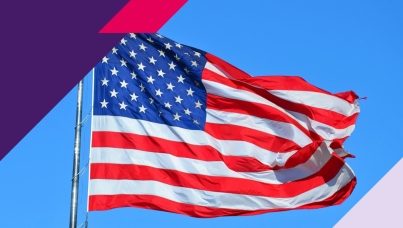Healthcare portals are gaining traction, but barriers to adoption remain
May 20, 2025 – A new LexisNexis survey, with data collection provided by Ipsos, finds that four in five (82%) American adults 18+ are confident (extremely/very/somewhat confident) in the security of their healthcare data on a healthcare portal. This is slightly higher confidence in security than other types of portals; survey respondents indicate they believe financial institution portal (74% yes), patient portal on a provider website (71% yes), and health insurance portal (69% yes) provide a secure environment.
More than three in five (61%) adults 18+ indicate a preference for using tools like passwords, one-time codes, or biometrics to verify their identity when logging into apps, websites, and portals they access compared to almost one in four (23%) who prefer security measures that happen in the background, and nearly one in six (16%) who do not have a preference (11%) or are unsure (5%).
Detailed Findings
Moderate but Growing Adoption of Healthcare Portals: While a significant portion of American adults 18+ use healthcare portals less than once a month (33%) or never (16%), there is a considerable user base engaging with these platforms for various healthcare tasks (48% use healthcare portals at least once a month.
- One in ten (10%) use a healthcare portal at least once per week.
- Nearly two-thirds (63%) of healthcare portal users leverage them to view test results.
- Half (50%) utilize healthcare portals for appointment scheduling.
Untapped Potential & Barriers to Adoption: A significant number of non-users of a healthcare portal are unaware they have a healthcare portal (17%) and/or do not know how to access their portal (13%), highlighting a potential opportunity to increase adoption through awareness campaigns. Concerns around data security and privacy, coupled with a preference for human interaction, represent significant barriers to wider adoption.
- Slightly more than one-third (36%) of healthcare portal non-users would prefer to talk with a human regarding healthcare concerns.
- Nearly one in eight (13%) harbor concerns about the security of their health information (i.e., worry about data breaches, hacking, etc.).
- One in twelve non-healthcare portal users (8%) voice concerns their health information may be shared.
Confidence in Healthcare Portal Security: A majority of U.S. adults 18+ surveyed express confidence in the security of their healthcare data on healthcare portals. This suggests a generally positive perception of security measures for healthcare portals, slightly above perceptions for other types of portals providing a secure environment.
- Just over four out of five (82%) of the general population adults 18+ indicate being at least somewhat confident (somewhat/very/extremely confident) in the security of healthcare data on a healthcare portal.
- Nearly three in four (74%) believe financial institution portals provide a secure environment, while seven in ten (71%) feel patient portals on provider websites are secure and just over two-thirds (69%) view health insurance portals as secure.
- While three in five (61%) American adults 18+ believe online shopping with retail apps provides a secure environment, significantly less feel the same about e-commerce marketplaces (35% - yes) and online auction apps or websites (30% - yes)
Preference for Familiar Login Methods: S. adults18+ surveyed demonstrate a strong preference for verifying their identity when logging into apps, websites, and portals they use with traditional login methods like usernames/passwords (58%) and/or two-factor authentication (56%). While biometrics are gaining traction (38%), there's a clear need for healthcare portals to balance security enhancements with user familiarity and convenience.
- About three in five (61%) favor tools like passwords, one-time codes, or biometrics for identity verification over passive security measures (23%, those that happen in the background by recognizing the device being used/IP address or physical location to authenticate identity).
- According to three in five (62%) U.S. adults 18+ username and password is the easiest method of verifying one’s identity on an app, website, and portal, while almost half (48%) feel two-factor authentication is easy to use for platform access identity verification.
Room for Improvement in Login Experience: Half (50%) of those who use at least one healthcare portal find the healthcare portal comparable to other platforms, however, slightly more than one in eight (13%) find it more difficult. This highlights an opportunity to streamline the login process and reduce friction for healthcare portal users.
- One in three (33%) healthcare portal users perceive healthcare portal logins to be easier (13% much easier and 20% somewhat easier) than other app or portal experiences, while one in eight healthcare portal users (13%) perceive portal logins to be more difficult (9% somewhat more difficult and 4% much more difficult).
These are findings of a LexisNexis survey, with data collection provided by Ipsos, conducted between March 17 – March 20, 2025. For this survey, a sample of 3,010 U.S. adults aged 18 and older were surveyed online in English. The results of this research have a credibility interval of plus or minus 2.0 percentage points for all respondents.


